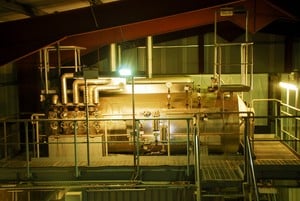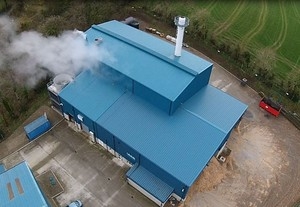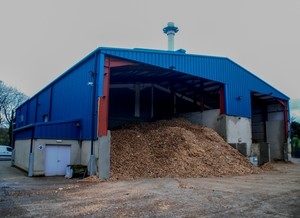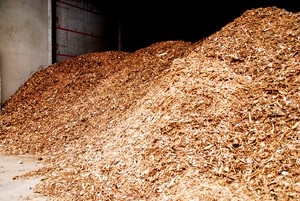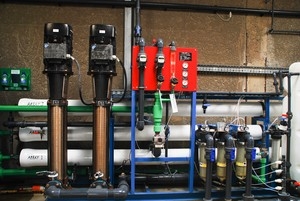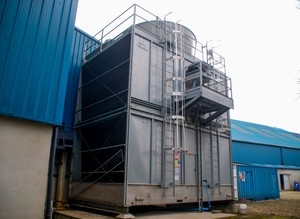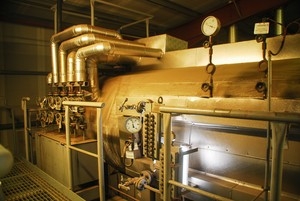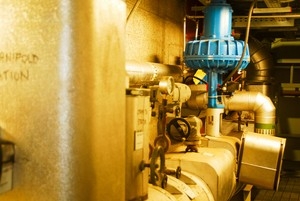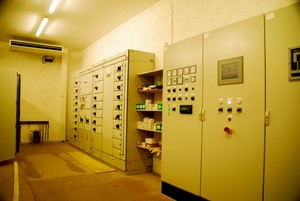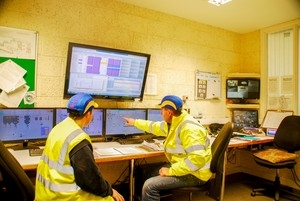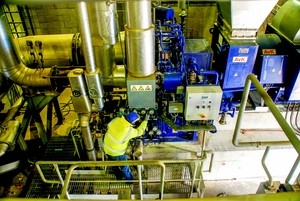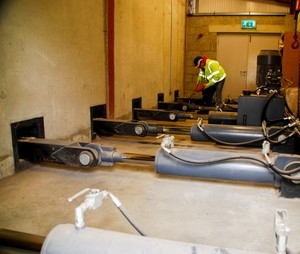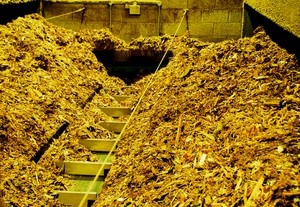Brief description of the Tyrone Energy installation.
The main purpose of the activities at the installation is the co-incineration of waste wood in a single furnace with a thermal capacity of 13MW. The heat from the combustion is used to produce steam which in turn is used to drive a 2.7MW turbine. Electrical energy is supplied to the grid.
The site receives chipped waste wood to site via tipper truck. The waste is stored in dedicated bunkers that feed the furnace via a walking floor arrangement and then augurs the wood fuel to a moving stepped grate furnace. As the waste is moved along the grate air is added to aid combustion. The waste is burned to ash as it travels the grate. Ash is collected and stored in dedicated skips. The ash represents 1 to 5% of the initial fuel mass.
As the waste burns combustion gases are released. These gases pass into a secondary combustion zone. The gas in the secondary combustion zone is maintained at a minimum of 850ºC for 2 seconds. This ensures complete combustion, and destruction of substances such as PCBs, dioxins and furans. Auxiliary burners are fitted to ensure the secondary combustion zone is maintained at 850ºC. The plant has also been designed to ensure a residence time of 2 seconds. The residence time and temperature will also be subject to validation once the plant is in operation.
The combustion process is continuously monitored and controlled with the aid of computerized system control and data acquisition (SCADA) system and attendant operators. Waste feed interlocks prevent co-incineration during start-up and shutdown, abnormal operating conditions and times when temperature falls below 850 ºC. These interlocks are incorporated into the plant design and operation, and specifically required by conditions in this permit.
Heat from the combustion of the wood waste is recovered via a multistage super-heater and boiler to produce high pressure steam. Some of remaining heat in the flue gas is recovered via a flue economizer which preheats water feeding the boiler. The steam is used to drive a multistage turbine, which generates 2.7MWe of electricity for supply to the grid.
Gases from the combustion of the waste wood require cleaning to comply with the emission limits of the Waste Incineration Directive. The cleaning process involves the injection of an urea solution to reduce nitrogen oxides to elemental nitrogen. A cyclonic separator then removes a portion of particulate matter. Flue gases are then injected with an alkaline powder that neutralises acid gases such as HCl and SO2.
Activated carbon powder is also injected at this point to capture heavy metals, volatile organics and other substances such as dioxins, furans and PCB’s. Particulate matter is then further removed from the flue gas by a high efficiency bag filtration system. After filtration the flue gases are either released to atmosphere out a 25m stack or recirculated back to the primary combustion chamber to reduce the formation of nitrogen oxides.
Before exiting the stack the combustion gases are continuously monitored for a number of parameters to ensure compliance with the Waste Incineration Directive. The plant is required to stop the co-incineration of waste if the emissions exceed the limits specified in this permit.
The water used to produce superheated steam requires a high level of purity. The water is sourced from the adjacent river. The resulting waste water from this treatment is a concentration of the dissolved and suspended solids from the river with no significant reduction in oxygen or rise in temperature, which is returned to the river. The temperature, residual chlorine and conductivity of the discharges to river are continuously monitored to ensure compliance with the limits specified in the permit.
To increase the efficiency of the turbine a vacuum is created by condensing the steam as it exits the turbine. River water is extracted and used indirectly for cooling and thus condensing. The evaporative cooling tower is again used to expel heat to atmosphere before returning water to the river. To prevent the growth of pathogenic organisms such as legionella, chlorine dioxide biocide is added to the water in the tooling tower. Chlorine dioxide is sparingly added to the cooling tower water and any residual is removed before discharge. Continuous monitoring instruments are fitted on the final discharge to the river.
- Project type: Biomass efw power station
- Our roles: Design, Tender, Project Manager
- Customer: Tyrone Energy Ltd
- Year: Fully commissioned late 2014
- Website: http://www.tyroneenergy.com
